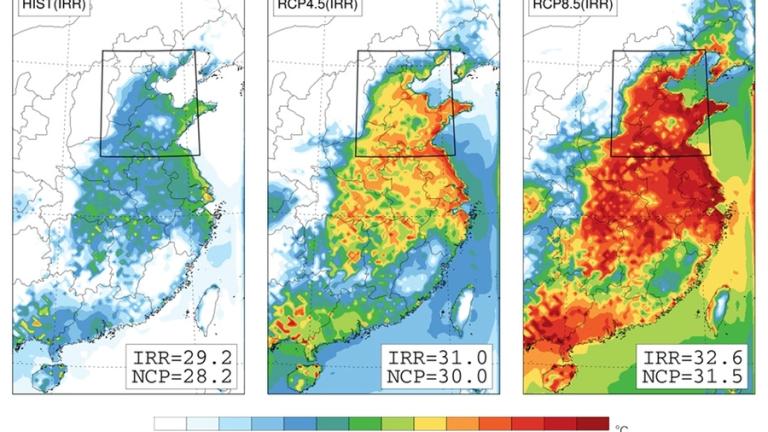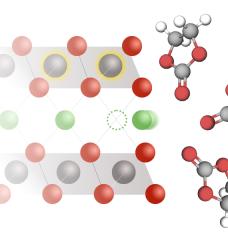
Smartphones can set your thermostat, control your lights, and even monitor your heart rate. But thanks to MIT Concrete Sustainability Hub research assistant Jake Roxon, they will also soon be able to measure pavement quality and reduce vehicle emissions.
In collaboration with Harvard University student Shahd Nara, Roxon has applied his love of cars with his engineering expertise to create Carbin, a crowdsourcing app that measures road quality and eventually will guide drivers on the most fuel-efficient route. The app utilizes research conducted by the MIT Concrete Sustainability Hub to cut a vehicle’s emissions by an estimated 5 to 10 percent.
The key to Carbin is a phone’s accelerometer. Ubiquitous in smartphones, the accelerometer measures orientation and local acceleration, allowing the device to accomplish tasks like changing the position of a screen or measuring footsteps. But most phones don’t fully utilize their accelerometers; smartphone accelerometers generally take measurements far below their practical potential of 100 hertz, a frequency of 100 times per second. By tapping into this reserve, Roxon can increase the sensitivity of a smartphone to detect the slightest defects in pavements, all from within a moving car’s cabin.
After recording these pavement defects with the accelerometer, Roxon can then quantify a road’s roughness, meaning he has essentially created a heartbeat monitor for the road.
Roughness is expressed in IRI, or International Roughness Index, which is the metric for measuring road quality. In addition to ride quality, it also contributes to fuel consumption.
“If you are interested in a road’s roughness, the app can display IRI; if you are interested in the fuel consumption the app can show you if, say, 20 to 25 percent of your fuel consumption comes from a poor-quality road — which is totally possible in a city,” Roxon says.
One issue arises, though, when measuring the roughness of the ride: How can one determine what readings are from the road, the car, or even the occupants? According to Roxon, only time can tell.
“For us to gather any information about the vehicle, we need at the very minimum three minutes of data,” he says. “If you think about how often the accelerometer takes measurements, that can give you up to 18,000 data points.”
With this robust dataset, Roxon and his team say they can cut out the “noise,” or the extraneous data from the car or its cargo.
The next step for Roxon and his team is to use the data to determine excess fuel consumption and pavement quality in real-time. Traditional methods that calculate pavement data en masse would completely swamp a phone’s processing ability, so instead, Roxon determines fuel consumption on a step by step basis. By selecting data points, for example, every minute and comparing them to the prior minute, he can calculate the difference in pavement quality, and therefore a pavement’s roughness.
Eventually, by leveraging crowdsourcing, he hopes to overlay this roughness data onto road maps and then use machine learning algorithms like those of Apple Maps or Google maps to route drivers on the path of least resistance. As one might expect, this feature could prove highly useful for fleet drivers who drive regularly.
“On average, a semi-truck in the U.S. consumes around 20,000 gallons of diesel per year and the average diesel price in 2018 was $3.19. If you multiply one by the other, you are looking at $63,600 per year per year in fuel costs,” says Roxon, “Now, with our app, we could safely identify 5 percent to 10 percent savings for these drivers. That becomes over $6,000 dollars for just one truck.”
With some fleets in the U.S. totaling in the thousands, even tens of thousands, this could save companies large sums of money.
Truck drivers may also find Carbin useful for a different reason. It also has the potential to simply and accurately monitor tire pressure.
Here’s how it works: When a tire’s pressure is low, a car uses more energy to turn it; this can have a slight influence on the motion of the car. Carbin allows a smartphone’s accelerometer to read this often-unnoticeable motion and determine which tire needs inflating and by how much.
Since improperly inflated tires increase expenses and, at worst, can lead to dangerous events like blowouts, this could prove valuable to truckers. This is particularly the case since many trucks lack tire pressure sensors — which are both expensive and often unreliable.
State and city agencies may also find a use for the app. While federal agencies have the funds to monitor the quality of their pavements using sophisticated technology, the method is expensive for state agencies and beyond the budget of most cities. With limited funding, states must survey their pavements in sections over several years which prevents accurate monitoring of the performance of the entire road network. Cities have even less resources, so they tend to rely on reporting by citizens and visual examination by inspectors to determine road maintenance. The Carbin app would allow cities and states to gain a better understanding of their pavement quality at a far more reasonable price.
When its features roll out later this month Carbin will offer users a suite of options to save money, track excess emissions, and understand the carbon footprint of their infrastructure.





